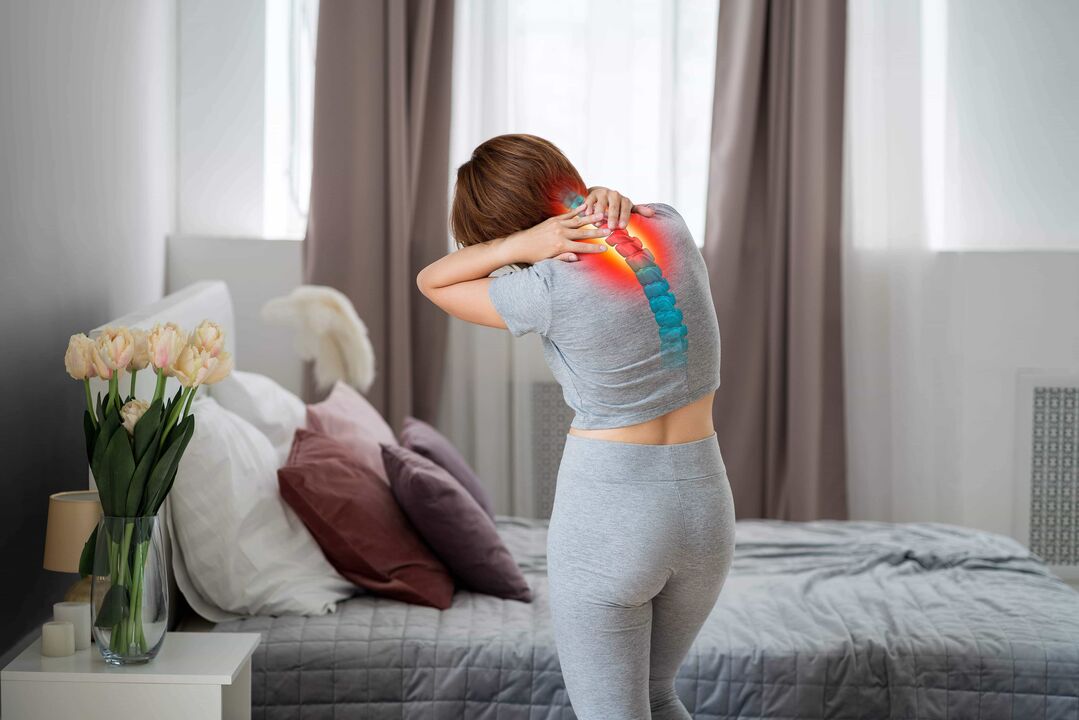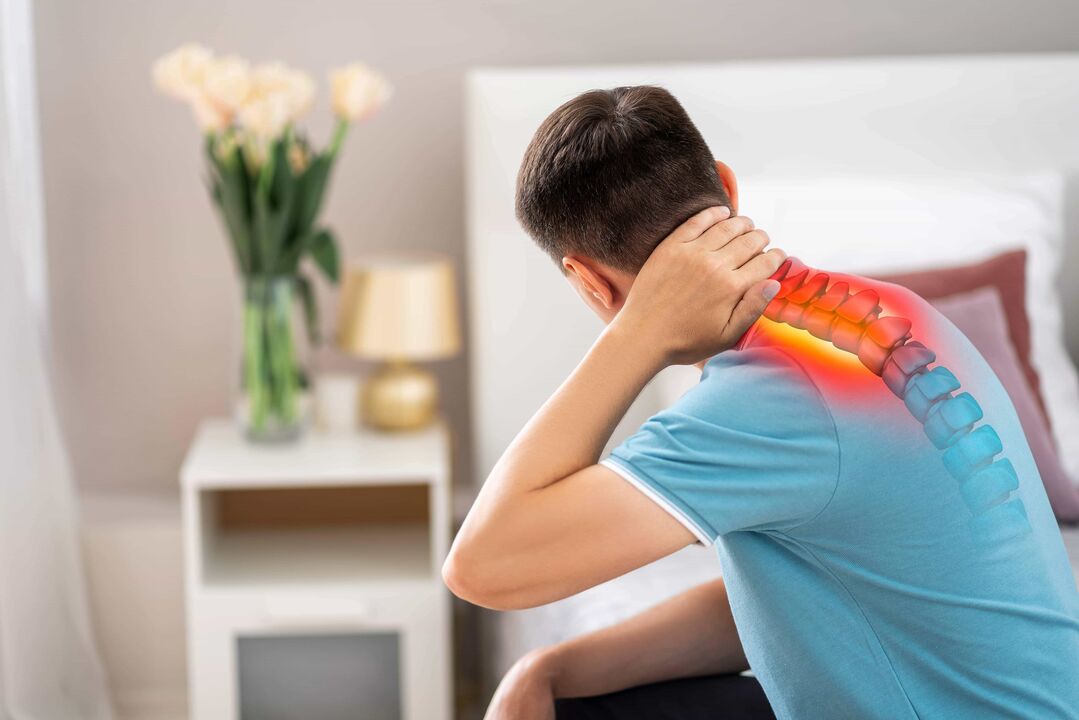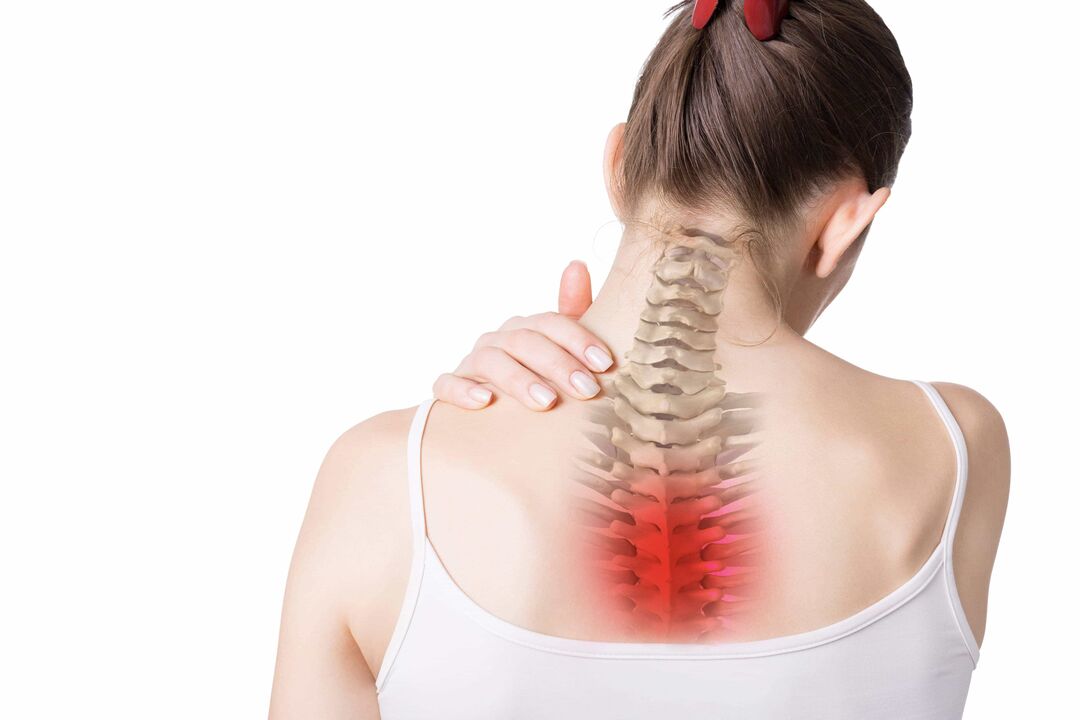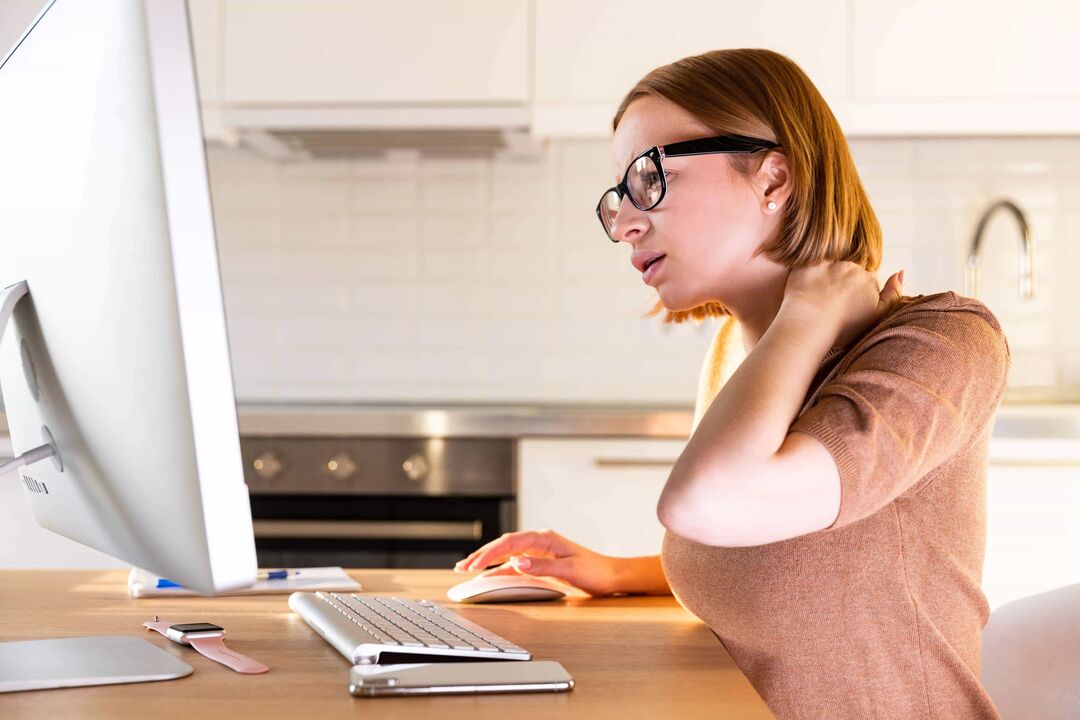Osteochondrosis is a common condition in which patients experience pain and limited movement in various parts of the back. Previously, the disease was thought to be characterized only by the elderly, but in recent years, osteochondrosis has been increasingly seen in younger patients. According to statistics, every second inhabitant of the earth is prone to back pain.

osteochondrosis in women
The human spine consists of 32-34 vertebrae connected to each other in a vertical position. Between the vertebrae is a layer of cartilage - the so-called cartilaginous disc. They provide flexibility and mobility of the spine during movement.
What is osteochondrosis? This is a spinal disorder based on the destruction of the intervertebral discs and then the vertebrae themselves. Over time, the destruction of these discs can lead to complications such as herniation (partial herniation of the disc) and herniated vertebrae.
Mostly, osteochondrosis affects residents of large cities. Sedentary work, therefore, lacks movement, leading to static overloading of the spine.
reason
When a person walks, the load on the spine is unevenly distributed. The intervertebral disc is compressed, the distance between the vertebrae is reduced, and as a result the intervertebral cartilage tissue is destroyed. If the disease starts, nerve roots can also be damaged. In this condition, a person may experience pain in the area of the nerve root, as well as a tingling, burning, "crawling" sensation. Sitting in an uncomfortable position for long periods of time and squeezing your arm or leg can cause pain. In addition, there are risk factors.
Osteochondrosis can cause diseases of the musculoskeletal system, such as flat feet, scoliosis, and musculoskeletal diseases. In addition, osteochondrosis is also seen in endocrine diseases such as metabolic disorders, diabetes and thyroid diseases. Lifestyle also affects the course of the disease. If a person regularly maintains uncomfortable positions, stands or sits for long periods of time, and lives a sedentary lifestyle, all of this can lead to the destruction of the intervertebral discs. Malnutrition, which is mainly fat and lacks vitamins and minerals, can also cause spinal problems. If a person's spine is injured, bruised, and operated on, this can trigger an exacerbation of osteochondrosis.
Genetics negatively affects the course of the disease.

osteochondrosis in men
Bad habits (smoking, excessive alcohol consumption) can also negatively affect the spine. Nicotine adversely affects metabolism, causing the disc to weaken. Being overweight puts extra stress on all parts of the spine and can eventually damage the discs. A sedentary lifestyle is also bad for the spine. Due to the lack of exercise, the load on the back increases, the discs are "erased" and the cartilage is damaged. Microtrauma to the spine can also occur with excessive physical exertion and occupational exercise. The first symptoms of osteochondrosis may not appear right away.
Types of Osteochondrosis
cervical spine
The neck is a very flexible part of the body that undergoes numerous turns every day. The neck has seven small vertebrae connected to each other by special intervertebral discs. The disease in this sector is considered very serious because in the neck area there are many blood vessels (arteries and veins), as well as nerve roots responsible for vital body systems. Cervical osteochondrosis often complicates blood saturation in the head, so the brain is also affected. It is believed that manipulations performed on this part of the spine can result in immobilization, i. e. the movement of the entire body is violated.
thoracic
The vertebrae in the chest area are not as mobile as the lower back and neck. For this reason, thoracic osteochondrosis is less common than other types. Weight lifters and athletes are more likely than others to suffer from this part of the back. In some cases, thoracic osteochondrosis is confused with heart attack and lung disease. In order to establish a correct diagnosis, examination and consultation with a doctor is required.
Lumbar (or lumbosacral)
The lumbar spine consists of five vertebrae connected by intervertebral discs. These vertebrae are large and strong enough to bear the weight of the human body. However, if metabolic processes are disturbed, the vertebrae can quickly become inelastic and inflexible, and nerve roots in the lower back can be damaged. As a result, a person experiences severe lower back pain that radiates into the legs or groin.
If the sacroiliac spine is also affected, then this osteochondrosis is called lumbosacral. In this form, failure is stronger and more severe. People have trouble walking and sometimes have paralysis in their legs because of damage to the spinal cord and nerve roots that lead to the lower extremities. May be urinary incontinence.
The main symptoms
There are cervical, thoracic and lumbar osteochondrosis. The disease has many symptoms, depending on the extent of the lesion.
Symptoms of cervical osteochondrosis
The main symptom is neck pain, which is exacerbated by turning and tilting the head. Painkillers help, but don't last long. Dizziness and tinnitus are common. Some patients report numbness in the face and neck and weakness in the arms.
Symptoms of thoracic osteochondrosis
Occurs less frequently. With this type of osteochondrosis, a person has pain in the chest area between the shoulder blades. Bending and moving can make the pain worse. There is a lump in the throat and breathing becomes difficult. Numbness in the chest, heart and stomach pain may occur.
Symptoms of lumbar osteochondrosis
The most common type of this disease. The main symptom is low back pain, radiating to one or both legs, groin, abdomen. The sensation is especially often felt when turning to one side, leaning the body.

Symptoms of osteochondrosis
diagnosis
Treatment of osteochondrosis is performed by a neurologist. To make a diagnosis, he will prescribe tests. Basically, this is an X-ray of the affected back, and if complications are suspected - a herniated spine and a hernia, an MRI (Magnetic Resonance Imaging) is needed. In some cases, an ultrasound of the vertebral arteries is done.
treat
Treatment for osteochondrosis depends on the stage of the disease, age, and individual characteristics of the person.
Treatment is designed to relieve pain, relax muscles, and prevent complications. The main group for the treatment of this disease is non-steroidal anti-inflammatory drugs. These are pain relievers and reduce inflammation. Anti-inflammatory drugs are available in the form of injections and tablets. Released by prescription.
Also, use a muscle relaxant - a drug that relaxes spastic muscles and, as a result, reduces muscle pain. Usually for external use. These drugs reduce pain and have a "distracting" effect, i. e. warmth or coolness.
For pain relief, topical remedies are excellent. These ointments and creams reduce swelling, reduce inflammation, and reduce pain at the site of the injury.
The drugs have no cumulative effect, and importantly, they are dispensed without a prescription. These funds reliably relieve pain anywhere in the spine.
Among them, warm ointments can be distinguished - their effect occurs in about half an hour. They work by dilating blood vessels in the skin and inhibiting the transmission of nerve impulses to the brain.
However, it is worth remembering that ointments with analgesic properties can adversely affect people with worsening gastrointestinal disorders.
In addition, there are other topical preparations, patches, that can also relieve pain and swelling. These patches are available without a prescription.
In addition to pain relief, medications to restore nerve roots may also be prescribed. These are B vitamins. They are prescribed in the form of injections or tablets during the course.
In addition to medication, patients were asked to wear special bandages and corsets. Such products reduce the burden on the spine, improve metabolic processes and strengthen the structure of the intervertebral discs. Appointed after eliminating spine pain.
As mentioned above, osteochondrosis can lead to a deterioration in the elasticity and mobility of the intervertebral disc. To restore this important structure, chondroprotective agents are used in the treatment, these drugs restore cartilage and prevent it from being destroyed. They are used only under the supervision of a doctor, course.
After the pain and inflammation are eliminated, recovery is required. For this, physical therapy is used: massage, acupuncture, electrical stimulation. Massage no earlier than 3-6 months after treatment. If a person has protrusions and hernias, traction on the spine is recommended.
Exercise therapy for osteochondrosis
Exercise therapy and gymnastics are great additions to the treatment of osteochondrosis. A prerequisite is to exercise only after the back pain subsides. For each patient, exercise was selected individually based on age and physical characteristics.
Gymnastics for osteochondrosis improves blood circulation and metabolism and strengthens back muscles. As a result of this strengthening, spasms, and excessive tension in the spine, the back becomes more elastic. Regularity of performance and personally chosen practice are important. In addition, gymnastics is a proven method of preventing the development of the disease itself. So a little exercise in the morning, and five minutes in the workplace, is good for your back.
How to sleep properly?
It is believed that sleeping on your back is most useful. This is the most comfortable position for the spine because in this position all muscles are completely relaxed. In addition, for those with lumbar osteochondrosis, it is recommended to place a small roller or pillow under the knee. Sleeping on your stomach is not recommended - this is bad for the cervical spine.
In this position, a person turns their head so that vital blood vessels and nerve roots in the neck are compressed and blood circulation is disrupted. As a result, there is insufficient blood flow to the head, dizziness and headache, and possibly a feeling of numbness in the hands. A side body position is also considered acceptable.

Working in front of a computer for long periods of time can lead to osteochondrosis
Pillows and Mattresses
Mattress
For proper and healthy sleep, it is best to choose orthopedic products. An orthopedic mattress is useful for all parts of the spine, it allows you to maintain your natural anatomical curve - which improves blood circulation in your back. The back muscles on this mattress are in the most comfortable and relaxed state, and people get enough sleep.
Mattresses vary: firm, soft, medium firm. Worth choosing individually.
- For children and teens, a medium to high firm mattress can be useful.
- A medium firm mattress is recommended for people over 25 with a healthy back.
- In the presence of scoliosis and other back conditions, it is worth buying a firm mattress.
Pillow
An important factor in healthy sleep is pillow choice. It should be soft and comfortable enough to support the curve of the spine and relieve tension in the neck muscles. Pillows are good for sleep, relax the neck and head, and improve blood circulation. These pillows help maintain posture and get rid of snoring.
I would like to add that healthy sleep requires comfort and a good environment. Don't be nervous before going to bed and avoid physical activity. You can relax with salt or herbs (lavender, chamomile). You need to sleep in a well-ventilated room with 40-60% humidity.
prevention
It's probably no secret that prevention is always easier and cheaper than cure for anyone. The spine needs to be taken care of from an early age. It is important to monitor your posture during classes and meals to choose the right furniture.
If your work is sedentary, try interrupting every two hours with a five-minute pause for gymnastics. Try not to stand in one position for long periods of time - this will increase the load on your back. For sleep, choose a firm, springless mattress. Participate in sports activities. Swimming, fitness, dancing - choose active leisure activities.
Try not to lift weights at once. It is best to divide the load into several parts. Don't lift heavy objects with one hand - spread the weight over both hands. Taking vitamins and trace elements, B vitamins, vitamins D, E, calcium, phosphorus are especially useful for the back.
For back pain, seek medical attention.
Take care of your back!

























